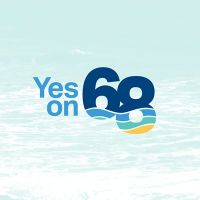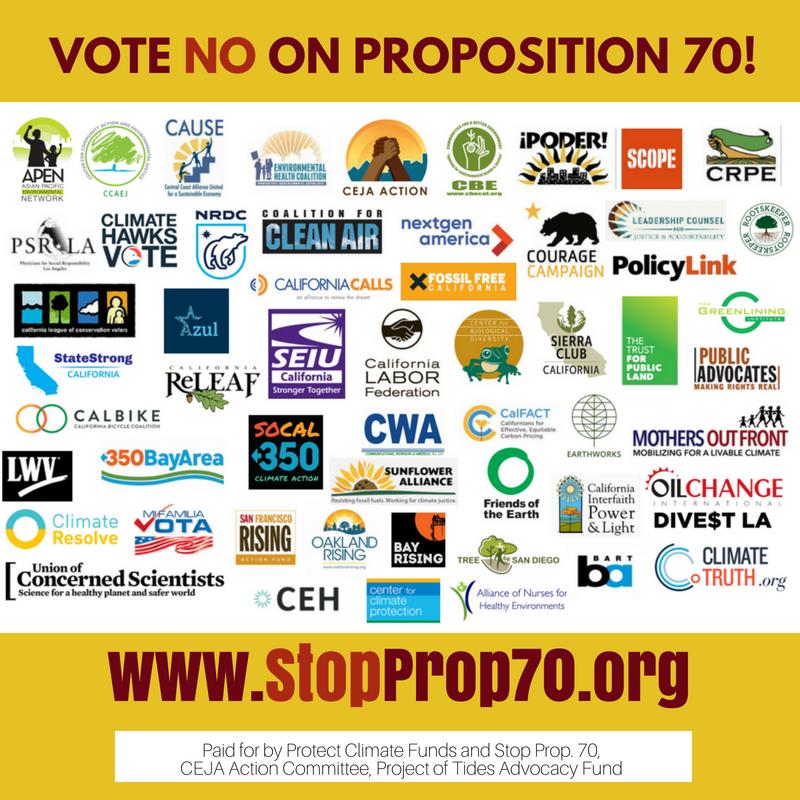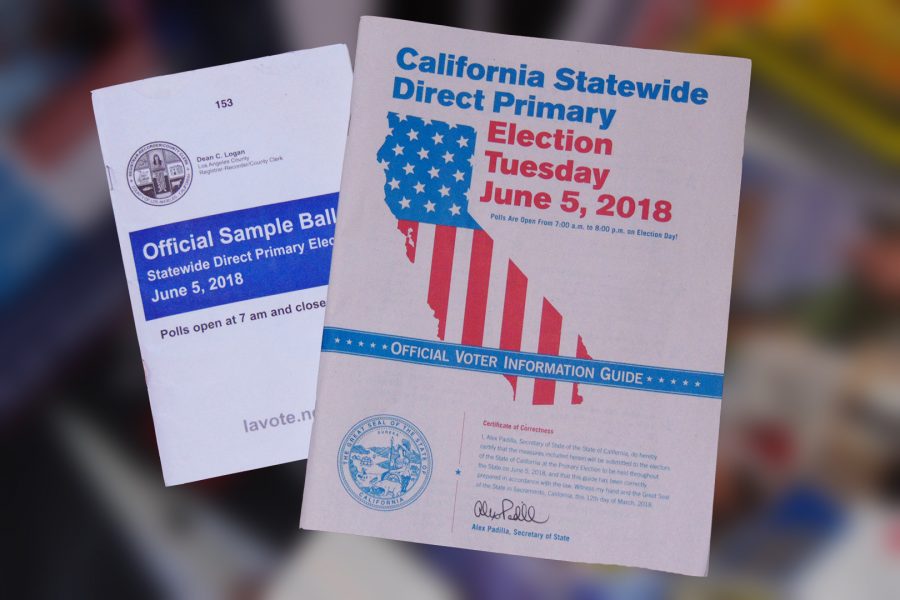Tuesday, June 5.
Everything comes down to that date, and voting in this primary is essential to pick the “Top Two” for the November general midterm election.
Regardless of party, the two candidates with the highest votes will make it to the next election, but nonpartisan judges can win outright if they have a majority exceeding 50 percent. Otherwise, they too have a runoff vote in the November election.
There are 32 positions to be voted on for every ballot.
State Governor, Lieutenant Governor, Secretary of State, Controller, Treasurer, Attorney General, Insurance Commissioner, Member State Board of Equalization (3rd District), United States Senator, United States Representative (39th District), State Senator, State Assembly (57th District), Judicial, School, County, and State Measures (Propositions).
State Governor has 27 candidates: 12 Democrats, five Republicans, five without a party preference, two Libertarians, two Green, and one member of the Peace and Freedom party.
California’s Governor holds the highest office in the state, vetoing and signing bills, and serving as commander-in-chief of the state military. The position allows line-item veto for bills with appropriations, and a line-item veto is a partial veto to pass the bill but restrict certain segments.
Think of the governor as the president of California.
Lieutenant Governor has 11 candidates: four Democrats, four Republicans, two without a party preference and one Libertarian.
California’s Lieutenant Governor serves as acting governor whenever the governor is absent, and becomes governor if the office becomes vacant. They are president of the Senate and vote as a tiebreaker, and serves as a voting member on several boards, rotating with State Controller as chair on State Lands Commission, which manages land-use, control, and leasing of state-owned land.
Consider this position the vice president of California.
Secretary of State has eight candidates: two Democrats, two Republicans, two Green, two Libertarians, and one member of the Peace and Freedom party.
In California, the office of Secretary of State hosts around 500 people who work to make the government transparent and accessible. The head of the office, which the candidates are running for, is responsible as Chief Elections Officer, and implements disclosure of campaign and lobbyist financial information among other important duties.
In short, Secretary of State must ensure election votes are counted, announced, and that campaign disclosures were made prior to the vote for transparency. Although they have party preferences, they must be impartial to all candidates running.
For more information on who is running for Secretary of State, select a candidate here.
Controller has three candidates: one Democrat, one Republican, and one member of the Peace and Freedom party.
The office of Controller appoints one candidate as the chief financial officer CFO of California. This individual is responsible for the distribution of state resources and manages the sixth largest economy in the world. The Controller safeguards property, audits government agencies, and is a member of several financing authorities and boards.
To put it simply, think of California as a company, and the Controller handles where the finances are used and ensures they are used properly in all other companies statewide.
For more information on who is running for Controller, select a candidate here.
Treasurer has five candidates: two Democrats, two Republicans, and one member of the Peace and Freedom party.
The Treasurer serves on the boards of the Public Employees’ Retirement System CalPERS which is a significant investor and second largest purchaser of healthcare service in the country.
In simple terms, the Treasurer is the Controller’s right hand, managing everything financial that the Controller does not, like financial investments.
For more information on who is running for Treasurer, select a candidate here.
Attorney General has four candidates: two Democrats and two Republicans.
The position of Attorney General regards the states’ top law enforcement official and lawyer. This individual is responsible for safeguarding the public, enforcing civil rights laws, helping victims, and overseeing more than 4,500 lawyers and sworn peace officers.
In short, the Attorney General is the head of all the laws in the state, entrusted to uphold and enforce it.
For more information on who is running for Attorney General, select a candidate here.
Insurance Commissioner has four candidates: two Democrats, one member of the Peace and Freedom party, and one candidate without a political party preference.
The office of Insurance Commissioner involves the California Department of Insurance CDI, which is the largest consumer protection agency for the largest insurance market in the state and fourth largest insurance market in the world.
The CDI is relied upon by consumers, insurance companies, and licensees to oversee insurer solvency, resolving consumer complaints, and prosecuting insurance fraud, all to ensure consumers are protected.
Thus, the Insurance Commissioner is the head of the CDI and is important for protecting consumers from insurance fraud in a large insurance market.
For more information on who is running for Insurance Commissioner, select a candidate here.
Member State Board of Equalization (3rd District) has eight candidates: six Democrats, one Republican, and one candidate without a political party preference.
The position for Member State Board of Equalization BOE is to replace the current 3rd District incumbent Jerome Horton. The BOE’s purpose is to ensure fair, efficient, and effective tax administration through a five member board. The fifth member is the Controller.
In short, the BOE has four elected board positions and the elected Controller. Their job is to ensure the administration around the tax program is accountable to the people.
For more information on who is running for Member State Board of Equalization (3rd District), select a candidate here.
United States Senator has 32 candidates: 11 Republicans, 10 Democrats, nine without a party preference, one member of the Peace and Freedom party, and one Libertarian.
The elected Senator will represent California in the national legislature.
United States Representative (39th District) has 17 candidates: seven Republicans, six Democrats, two American Independents, and two without a party preference.
The 39th district is composed of Walnut, Brea, Yorba Linda, Placentia, Fullerton, Buena Park, La Habra, La Habra Heights, Rowland Heights, and Hacienda Heights.
For more information regarding those 17 candidates running in the 39th District for United States Representative, check out this article on the race.
State Senator for full term and Senator Primary Election short term have overlapping candidates, with one in the full term and two in the short term that are not on both.
Full term is comprised of 10 candidates: eight Democrats and two Republicans, and short term is comprised of 11 candidates, nine Democrats and two Republicans.
For State Assembly (57th District) there are five candidates: three Democrats and two Republicans.
Due to regional differences, the State Assembly candidate being voted on will be different.
The 57th District includes portions of the San Gabriel Valley and Los Angeles County.
This district covers these areas: Avocado Heights, East La Mirada, Hacienda Heights, Industry, La Habra Heights, La Mirada, La Puente, Norwalk, Santa Fe Springs, South El Monte, South San Jose Hills, South Whittier, West Whittier-Los Nietos, and Whittier.
The last 14 positions to vote on are all nonpartisan.
There are 11 Judicial offices, with two to three candidates in each office vying to become superior court judges for a total of 28 candidates.
Regarding School there are four candidates running for Superintendent of Public Instruction.
County Assessor has four candidates as well, and County Sheriff has three candidates.
There are five State Measures, otherwise known as propositions, are votes of yes or no to a proposed measure.
Below is a brief summary of each proposition, click the proposition to find out more.
Measures 68 will directly impact finances of taxpayers, and measure 72 will affect property-tax assessments.
Measure 71 will not affect pocketbooks by itself, but its implementation will push measures such as the two above into effect sooner.
Measure 70 also does not issue a new tax or bond, but will requires a vote to approve use of a reserve fund.
Measure 69 will not change how much is paid in, but rather where the funds go to.
Measure 68 deals with bonds funding environmental activities. These bonds will be to fund parks, climate adaptation, water quality, water supply, and flood protection projects.
It authorizes $4 billion in general obligation bonds, which will increase state bond repayment costs averaging $200 million annually over 40 years. $8 billion, in layman’s terms.
Meaning that by the time the bond is paid off, the bond’s cost will double, with half of the cost in interest alone.
Local governments will on average save several tens of millions of dollars annually, with the cost pushed to the state.
The measure also reallocates $100 million in bonds that have not been issued from three propositions approved prior: Proposition 1 (2014), Proposition 84 (2006), and Proposition 40 (2002).
Proposition 1, a water bond; Proposition 84, a flood control and water supply improvements bond; and Prop 40, a parks and recreation bond.
The top ten highest expenditures are as follows:
Supporters of Proposition 68 include California’s Gov. Jerry Brown and Lt. Gov. Gavin Newsom, along with Sen. Kevin de León, representative of senate district 24, and Sen. Anthony Portantino, representative of senate district 25.
Organizations that support Proposition 68 include the Sierra Club California, the American Heart Association, the American Lung Association, and the Association of California Water Agencies among others.

Sen. Anthony Portantino and Susana Reyes, vice president of the Sierra Club coauthored an opinion in the Los Angeles Daily News.
“California has always been an environmental leader, and our public spaces, forests, lakes and beaches are recreational destinations for millions. Five years of severe drought followed by heavy rains have magnified the lingering aftermath of the 2008 economic downturn, leaving our state with a substantial need to invest in deteriorating local and regional parks and aging water infrastructure, dams, reservoirs, and flood protection,” they said regarding Proposition 68.
Opposition to Proposition 68 includes the respective presidents of the Central Coast and Howard Jarvis Taxpayers Associations, Andrea Seastrand and Jon Coupal.
Sen. John Moorlach, who represents senate district 37, also opposes Proposition 68.
“In an economic downturn, bonds must still be paid. And recessions happen. We are not talking about small change. The Prop. 68 repayment is $7.8 billion – $4 billion in principal, plus $3.8 billion in interest. That means $200 million a year for 40 years from the state’s general fund. Assuming they don’t leave the state to get relief from ever-high taxes, that means not just our children, but our grandchildren will be paying it off,” Moorlach said in his opinion editorial for The Sacramento Bee.
For more information regarding Proposition 68, click here.
To learn more about a different state measure, click the measure: Measure 69, Measure 70, Measure 71, or Measure 72. | All Positions To Vote On
Measure 69 is to ensure that certain new revenues be used for transportation purposes. It requires certain revenues raised by the 2017 transportation funding law, be used only for transportation.
The Nov. 1, 2017 transportation funding law refers to Senate Bill 1 (SB 1) where revenue was made from gas, fuel sales taxes, and Transportation Improvement Fees.
A quick refresher on SB 1, it increased the gas tax 12 cents to a $0.417 cent tax per gallon, and diesel 20 cents to a $0.36 cent tax per gallon, with a 4 percent raise on diesel fuel sales tax to 13 percent, according to Ballotpedia.
For SB 1’s Transportation Improvement Fee, it was a $25-$200 a year fee depending on the market value of a given vehicle.

There was opposition to SB 1 when it was first passed, but it has been in effect, and this measure only concerns the funds already raised.
“Prop. 69 should not be confused with a possible repeal, however. The transportation taxes are already in place and being collected and money already is being spent on our crumbling roads. This amendment gives voters the power to ensure their taxes are spent on what was promised,” the Monterey County Herald said.
Measure 69 also exempts the revenue generated from SB 1’s taxes and fees from the state appropriation limit, otherwise known as the Gann’s limit.
The Gann’s limit prohibits local and state governments from spending revenue in excess of per-person spending in the 1978-1979 fiscal year with an adjustment for changes in population and cost of living.
In short, Measure 69 ensures funds already raised through the SB 1 initiative will be spent, as intended, on transportation.
Supporters include Sen. Josh Newman, representative for Senate District 29, and Rep. Jim Frazier, California State Assembly District 11. Organizations that support the measure include the Transportation Agency for Monterey County, Transportation California, and United Contractors.
“It is essential that we provide Californians with a very clear assurance that these new revenues will be spent only on repairing our aging infrastructure, reducing congestion, and otherwise supporting transportation improvements,” Newman said in favor of Measure 69.

Opposition includes Sen. John Moorlach, of Senate District 37, and Frank Bigelow, of Assembly District 5.
“Proposition 69 exempts the recently enacted transportation taxes and fees from the state spending limit. This effectively raises the cap on general fund spending by approximately $2 billion annually. By exempting these expenditures, state spending would be allowed to grow to levels that otherwise could not be reached,” Bigelow said regarding the measure.
Those opposed will be able to vote on a potential repeal of SB 1 on Nov. 6.
For more information regarding Proposition 69, click here.
To learn more about a different state measure, click the measure: Measure 68, Measure 70, Measure 71, or Measure 72. | All Positions To Vote On
Measure 70 regards a super majority vote to approve use of cap-and-trade reserve funds.
Starting in 2024, it will have funds from cap-and-trade accumulate in a reserve fund until the legislature by a two-thirds majority, authorizes use of the revenues.
Cap-and-trade is jargon for emissions incentives, where the government provides economic incentives for reduced output of pollutants. Super majority was also jargon, used to represent two-thirds majority.
An even simpler way to look at it is the government sets a cap on the amount of greenhouse gases that can be emitted and then allows companies to buy or sell (trade) permits, that would allow them to pass gas (pun intended).
The measure would set these funds aside for a one time two-thirds vote in 2024 or thereafter to pass a spending plan for (authorizing the use of) the revenue.
Supporters include Gov. Jerry Brown, Rep. Chad Mayes, California State Assembly 42, and the California Chamber of Commerce.
“Proposition 70 is part of a historic bipartisan effort to achieve our climate goals, retain good paying jobs to sustain our growing economy, and protect air quality and public health,” Brown, Mayes, and Allan Zaremberg, president of California Chamber of Commerce said in a statement regarding the measure.

Opposition includes Sen. Ben Allen, representative of Senate District 26, and Rep. Todd Gloria, representative of State Assembly 78. Groups in opposition include the Coalition for Clean Air, Asian Pacific Environmental Network, and Climate Hawks Vote.
“We agree that it makes sense for the program’s allocations to be reviewed, but the Legislature should do that every year through the budget process, and there’s no valid reason to set up an anti-democratic two-thirds hurdle,” Deputy Policy Director for the Coalition for Clean Air, Chris Chavez, said regarding the measure.
For more information regarding Proposition 70, click here.
To learn more about a different state measure, click the measure: Measure 68, Measure 69, Measure 71, or Measure 72. | All Positions To Vote On
Measure 71 issues an effective date for ballot measures to be initiated by.
The text of the measure enacts approved measures five days after the Secretary of State certifies the election results.
It currently takes 38 days for the Secretary of State to declare the outcome on measures
Supporters include Rep. Kevin Mullin and Rep. Marc Berman, representatives of State Assembly 22 and 24, respectively.
Rep. Mullin, Ralph E. Shaffer, professor emeritus of history at Cal Poly Pomona, and Helen Hutchinson, president of the League of Women Voters of California support Proposition 71.
“Proposition 71 is a simple common sense update of our elections laws, which will ensure accurate results following the approval of a ballot measure by voters. This is a non-controversial constitutional fix with bi-partisan support,” Mullin, Shaffer, and Hutchinson said in their official statement for the measure.
Opposition includes Gary Wesley, an attorney according to the LA Times.
“There is some danger in this measure that the State Legislature could, in the future and by its own enactment, delay how long the Secretary of State may take to declare the outcome of elections on measures (currently 38 days) and thereby undermine the process,” Wesley said in regards to the measure.
For more information regarding Proposition 71, click here.
To learn more about a different state measure, click the measure: Measure 68, Measure 69, Measure 70, or Measure 72. | All Positions To Vote On
Measure 72 concerns exempting newly constructed rain-capture systems from the property-tax reassessment requirement.
Currently, most construction work on a property require reassessment under the California Constitution.
If passed, rain-capture systems added after Jan. 1, 2019 will be excluded from property-tax reassessments.
Supporters include Sen. Steve Glazer, representative of Senate District 7, and four organizations: League of California Cities, Save the Bay, Planning and Conservation League, and Trout Unlimited.
“I feel it is necessary to incentivize the proliferation of rainwater capture systems. A property tax exclusion created by this measure would do precisely that and lead to a significant expansion of rainwater capture systems throughout the state, all while contributing to the State’s conservation efforts,” Glazer said in regards to the measure.
There is no known opposition to the measure according to Ballotpedia.
“There were no arguments in opposition to Proposition 72 submitted to the secretary of state to include in the official voter guide.”
For more information regarding Proposition 72, click here.
To learn more about a different state measure, click the measure: Measure 68, Measure 69, Measure 70, or Measure 71. | All Positions To Vote On
***
Primaries are Tuesday, June 5.



